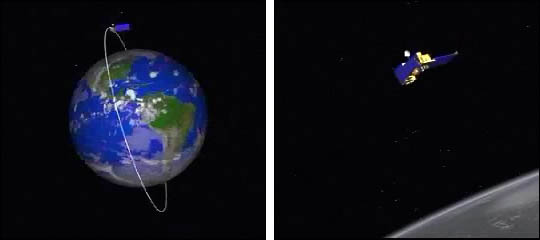


No instrument like the Multi-angle Imaging SpectroRadiometer (MISR) has flown in space before. Viewing the sunlit Earth simultaneously at nine widely spaced angles, MISR collects global images with high spatial detail in four colors at every angle. These images are carefully calibrated to provide accurate measures of the brightness, contrast, and color of reflected sunlight.
The change in reflection at different view angles affords the means to distinguish different types of atmospheric particles (aerosols), cloud forms, and land surface covers. Combined with stereoscopic techniques, this enables construction of 3-dimensional models and more accurate estimates of the total amount of sunlight reflected by Earth's diverse environments.
MISR provides new types of information for scientists studying Earth's climate, such as the partitioning of energy and carbon between the land surface and the atmosphere, and the regional and global impacts of different types of atmospheric particles and clouds on climate.
MISR was built for NASA by the Jet Propulsion Laboratory. It is part of NASA's Terra spacecraft, launched into a polar orbit around Earth on 18 December, 1999.
For more information see the MISR web site.
Animations courtesy JPL/Caltech